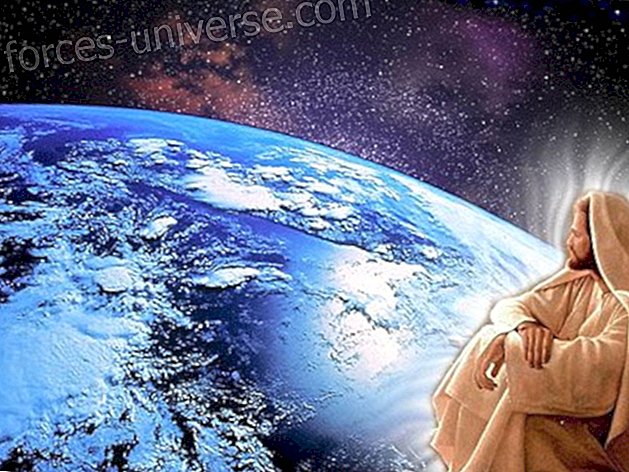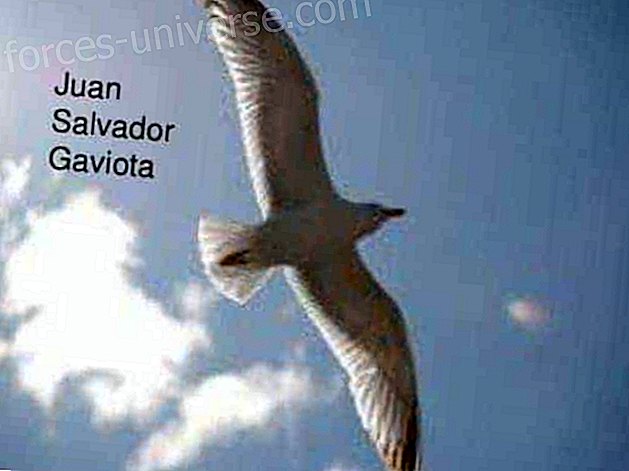
If we review the history and in particular the history of religions, we see that since ancient times man has undertaken his spiritual quest, asking questions that question his origin and destiny, the origin and destiny of the universe and thus, about other mysteries of the creation for which I had no answers. Questions like, who am I? Where do I come from? What will happen when I die? Who created me? Who created the universe?
The search for the answers to these questions has led man through different paths, whose final destination is the same, to find the source of all mysteries, of all the answers, to find the Supreme Being, regardless of whether it is a personal God like that of traditional religions or of an impersonal God like that of other religions and beliefs.
The spiritual path to the understanding of the divine
In my search I have realized the great amount of religions and beliefs that man has created to try to make that encounter with the Divinity, many of which have practically disappeared, despite the greatness they had in their time, as for example, the Sumerian religion, the Egyptian, the Babylonian, the Greek, to name a few. However , focused on religions and current spiritual tendencies, I have identified some paths that could summarize the paths that believers follow to achieve the goal of their encounter with God, which are surely not the only ones, but some of the most busy. I have called them: The Way of Faith, The Way of Knowledge, The Way of Service, The Way of Meditation and The Way of the New Age .
In this article I describe in a very general way what each of these paths is about . In future articles I will expand the information on what I have found regarding their beliefs, the doors that lead us to each of them and some of the obstacles that we must overcome in order to move forward and finally reach our goal of meeting God.
The Way of Faith
This is the path followed by believers in traditional monotheistic religions, among which the most representative today are Christianity, Islam and Judaism, which are the religious beliefs with the largest number of followers worldwide. All of them believe in a unique Creator of the universe, revealed to men through their prophets and all have their roots in the original alliance of the Hebrew patriarch Abraham with God .
According to some scholars of these religious and spiritual issues, this path is the only way to reach the Creator, because, according to his arguments, the only way to communicate with him is through our unconditional love and acceptance and absolute respect for his will, which arises from the faith we have in him.

The Way of Knowledge
Knowledge is the ability to understand reality through reason. Believers on the path of faith believe that it is not possible to access the Lord through knowledge. However, believers on this path think that the wisdom that we can achieve through deep understanding of creation can lead us to the desired encounter with its Creator.
Philosophy is the way we have traditionally used to try to understand, through reasoning, the origin and nature of creation and by that way access the conceived creator God For religions.
From the philosophy came modern science, which is the path through which many scientists spend time and effort to explain the no existence of God, what Which suggests that the atheism that is attributed to science is really not such, because, what is the point of seeking an explanation for the "non-existence" of something whose existence is denied in principle?
In conclusion, even though modern sciences do not declare that they are in search of God, it is evident that part of their effort is aimed at the search for the same truths that religions seek, which have been limitedly explained through faith in the existence of a creator and sustainer God of all that exists.
The Way of Service
This is the path of unconditional love to others. To give help without being requested. It is the compassion to do what is within our reach to avoid the suffering of others. It is solidarity with the most vulnerable. Although not always, but in many cases, this path is a complement to the followers of the Way of Faith, through which they achieve their maximum desire to finally serve God. This path begins with love of neighbor, continues with love for humanity and culminates with love and dedication to devotional service to the Lord.
The Way of Meditation
This is the traditional path of Eastern religions, which teaches us that through concentrated attention and contemplation of the products of our mind, we can achieve a state of tranquility that allows us to enter into harmony and in union with the creation and with the Divinity.
While it is true that its origin in the Eastern religious tradition is not discussed, especially through yoga, meditation techniques, with some modifications, have transcended other religions. Thus, we find them in Buddhism with different versions, as in Judaism, Christianity and Islam, to mention some of the main religions today.
The common goal of all meditation techniques is to release consciousness from the distractions and wanderings of the mind and, through that liberated consciousness, reach the highest possible level of spiritual development, which varies depending on religion or beliefs. of the practitioner

The New Age Road
Although the philosophical origin of this path can be traced back to ancient esoteric, occult and religious beliefs, it is in the mid-twentieth century when this movement begins to become visible. It is loaded with spiritual and religious syncretism and integrates elements of different beliefs, cults and religions, especially oriental and prior to traditional monotheistic religions, although it also takes some of its approaches and formally does not declare itself contrary to them.
The approach of the new era pursues the spiritual evolution of man until he reaches his divine essential state and fraternal union between men and the latter with mother nature and with God.
Given the sensitivity involved in addressing religious issues, I want to apologize to all those followers of the many religions and beliefs that I have not mentioned, because I know the importance of faith that professes for each believer, as a map of their return route to his god. I hope that with the general considerations that I have made in the description of the roads, some of them can adapt to the characteristics of their own route. I also apologize to those believers of the religions that I have mentioned, if I have committed any imprecision in the ideas that I have expressed.
Finally, I consider it important to point out that the content of this article is not intended to go beyond my own reflection and that its objective is not to promote the search by a particular path, but to awaken in the reader the motivation to undertake his own search and find his way, if he hasn't done it yet. I hope, in the next installment, I can share my reflections on each of these spiritual development routes.
______
AUTHOR: Juan Sequera, author for the White Brotherhood family.






